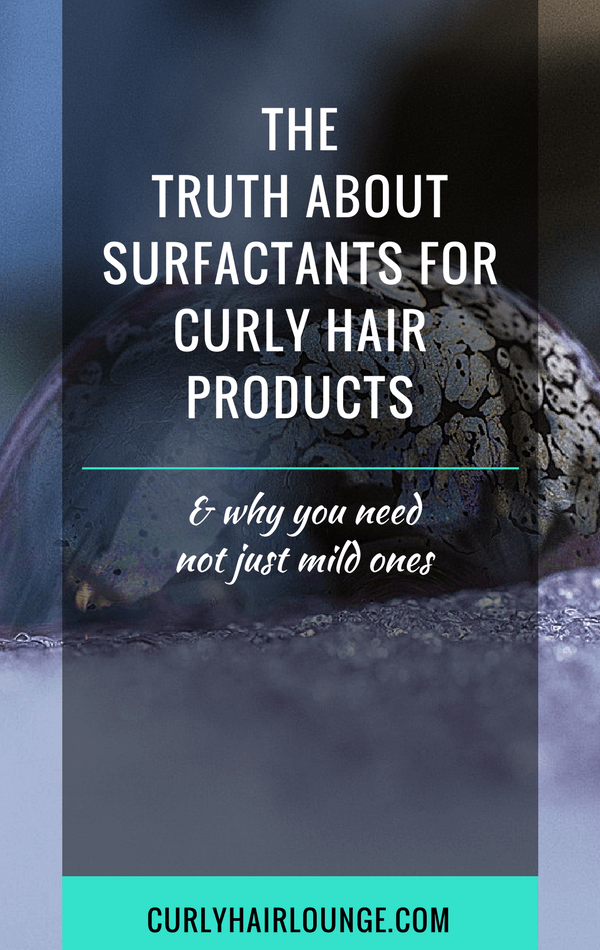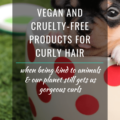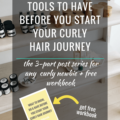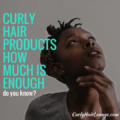If the title of this post caught your attention I’m glad because I needed a bait to wheel you into a subject that many people in the natural hair community are 1) unaware, 2) don’t understand or 3) ignore thinking they now know best. So let me just pull up my sleeves to try and explain the truth about surfactants in curly hair products, and clear some of the misconceptions that can make it hard for you to have healthy moisturised hair.
Okay, so unless we’re all living on a desert island with no access to modern commodities my guess is we all wash our hair and up until recently, shampoos were faithfully trusted to kick off this process by being in charge of removing all dirt, sweat, product residue, air pollution and whatnot from our hair – something only possible with the inclusion of surfactants (a.k.a detergents) in their formula.
However, in recent years surfactants, more specifically sulphates, have been shunned to the corner amid environmental concerns and evidence showing they can cause irritation, allergies, frizzy hair and deplete the hair’s natural oil (sebum).
Too Quick To Ditch Shampoos?
In the natural hair community, it seems the last bit of information is what has most people needed to know to break up with strong surfactants since any possibility of a product/ingredient making our naturally dry curly hair even drier is…. well, it’s a BIG no-no.
However, I see people embrace the co-wash-slash-cleansing conditioner trend all too quickly without really thinking about proper hair care needs.
Though the intentions are good – to avoid making hair even more dry – the chosen solution can bring about more problems like the perpetuation of dry hair leading up to issues of breakage, itchy and flaky scalp, limp curls, ineffective hair products, frizziness… shall I go on?!
A Quick 1-0-1 On Surfactants
What you need to understand is that surfactants come in a spectrum of how effective they are at doing their job – they go from strong to mild. Here’s a quick lesson on surfactants: they are molecules with a portion that attaches to water (hydrophilic) and a portion that attaches to oil/grease/dirt (hydrophobic).
In a nutshell, what makes surfactants different among themselves is their ability to remove grease (the hydrophobic portion) and their detergency or amount of lather they produce (the hydrophilic portion). Both these characteristics are determined by the length of the hydrocarbon present in the hydrophobic part and the ionic charge in the hydrophilic part. Are you lost?!… Bare with me for a little while longer.
Strong or Mild
All this means is that the shorter the hydrocarbon chain in the hydrophobic portion (the part with affinity to fats and oil) the stronger the surfactant is, and the longer the chain is the milder the surfactant.
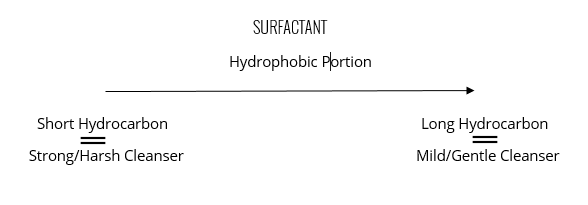
Lather or no Lather
Additionally, depending on the ionic nature of the hydrophilic portion surfactants are grouped differently (i.e. sulphates, succinates, polyhydroxylates or quarternerised groups) and can provide a lot or little lather.
So in this way, anionic surfactants with a short hydrocarbon chain like Sodium Lauryl Sulphate are strong/good cleansers and provide a lot of lather. They will clean your hair squeaky clean.
On the other hand, an amphoteric surfactant like Cocamidopropyl Betaine with a longer hydrocarbon chain is a gentle cleanser that provides a lot less lather. Take a look at the table below.

Okay, now that we got this little lesson out of the way, let me explain why being a Low or No-Poo only kinda girl can be bad for your hair and the hair goals you’re trying to achieve.
My Issue With Low Poo or Sulphate Free Only Hair Routines
I really understand the notion that strong sulphates strip the lipid protective layer of the hair causing dryness and frizz and why eliminating these surfactants seems like a good idea. You’d be literally avoiding these problems. This is why so many people are only using cleansing conditioners, low-poo or sulphate-free shampoos to clean their hair – these are hair cleansing products that have mild surfactants and don’t completely remove sebum for the hair.
However, mild surfactants or, in other words, long carbon chain cationic/amphoteric/nonionic surfactants have molecules that adhere to the hair with conditioning and anti-static properties to make it feel soft and smooth, to facilitate detangling, to provide shine and yes, let’s not forget, to also help with cleaning your hair.
Nonetheless, consider this…
- Most people in the natural hair community use vegetable oils and DIY butter concoctions on their hair.
- Most natural hair care brands also use these ingredients in their products in high concentrations.
This means that on top of all the dirt, grease and sweat on our hair from everyday life when people only wash their hair with products containing mild surfactants they are not cleaning their hair sufficiently well.
Let me ask you this…
Would you take your best and most delicate cashmere of silk top, rub oil or butter (or both) all over it, let that sit for a few days and maybe rub some more oil for a day or two, then wash your cashmere top with a fabric softener or even your co-wash and then repeat the whole process for days on end? Do you believe your top would be spotless?
No, I don’t think so! You cashmere top is your curly hair.
Plus, if you also remember that the ingredients in these gentle cleansers go on to deposit molecules on the hair the scenario gets worse. All this does is prevent, once again, moisture (water) to get through the cuticle layers and hydrate the hair.
So you see, it’s not hard to imagine the layer upon layer of product/ingredient buildup on the hair or to imagine hair that is ‘dying’ of thirst but is made to feel soft and moisturised because of all the ingredients that mask what is really going on underneath.
Oh, and let’s not forget that those mild surfactants with a weak hydrophobic portion (weak affinity to fats and oil) will have even more difficulties doing a good job cleaning your hair and scalp of grease if you regularly ‘oil’ your hair and scalp.
Trust me, it may take a while for symptoms to arise but they will eventually – itchy and/or flaky scalp, dry hair, breakage, weighed down hair, lack of lustre, inability to retain length… – it all boils down to how much oils and butter you use.
The bottom line is if you’re the typical curly girl, that uses oils and butter and/or have products with these ingredients listed at the very top, you need to reassess the way you are cleaning your hair.
The Solution
The solution is not that complicated and will depend on the products you use (their oil and butter content), how often you use oils and butter and your water quality (hard water deposits minerals on the hair that mild surfactants can’t eliminate).
If you happen to score high on all these you’ll need to also introduce a clarifying shampoo into your hair routine. If you score low, an occasional clarifying session may be enough to keep any problems at bay.
Or, if you score very low with no use of oils, butter or ingredients that are hard to remove, maybe just a sulphate free shampoo or a cleansing conditioner with stronger surfactants will be enough. Remember, they exist in a spectrum.
It all boils down to finding a balance, to being aware of how your hair responds and feels. Are your staple products not responding the same way, has your hair lost its sheen, have your curls lost bounce or shape, is your hair feeling dry??
I, for instance, have three different products to wash my hair and they vary in the strength f the surfactants. I have a gentle sulphate free moisturising shampoo, a sulphate free shampoo with stronger surfactants and a clarifying shampoo to remove buildup and hard water minerals.
But these are just very general guidelines and my personal experience. Each case must be assessed individually, as there are other things to consider such as your lifestyle or how often you wash your hair, this is something I go through in my Shed & Rescue coaching call.
What I want you to take away with you after reading this post is that surfactants range in their ability/strength to remove dirt and grease from the hair. The decision to choose which ones your cleansers/shampoos will have should not depend on a popular misinformed trend, but on your hair regimen, on the products you use and how you use them.

